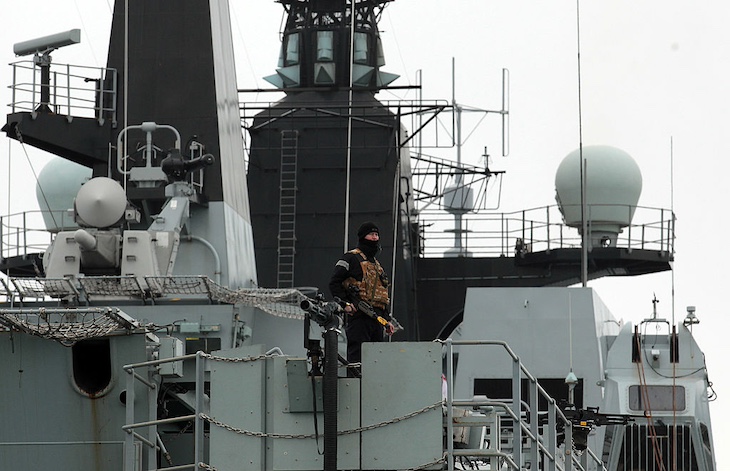Defence Secretary John Healey has announced more changes to the armed forces, detailing several capabilities to be cut to achieve savings of £500 million over the next five years. The Royal Navy’s two amphibious assault ships, HMS Bulwark and HMS Albion, will be retired at the end of the year, while HMS Northumberland, a Type 23 frigate, will be decommissioned because her structural damage is ‘uneconomical to repair’.
The retirement of the amphibious assault ships has profound implications for the future role of the Royal Marines
The Royal Fleet Auxiliary’s two Wave-class fast fleet tankers, RFA Wave Knight and RFA Wave Ruler, will also be retired. They have been in ‘extended readiness’ – that is, maintained but uncrewed and not scheduled for deployment – since February 2022. The Royal Air Force will part with 17 Puma HC2 transport helicopters and 15 Chinook heavy-lift helicopters, and the Army will lose 41 Watchkeeper M1 unmanned aerial vehicles used for intelligence, surveillance, target acquisition and reconnaissance.
Healey’s message is that these are ‘common-sense decisions’ which are primarily about retiring out-of-date or superseded systems and technology and making the defence budget more efficient. He emphasised that the Wave-class tankers had not been deployed for some years, that HMS Bulwark and HMS Albion had been ‘effectively retired by previous ministers but superficially kept on the books at a cost of £9 million a year’, and that some of the helicopters have been in service for up to 50 years. That is all true so far as it goes.
What matters in the end, however, is the effect on the UK’s military capabilities. The retirement of the amphibious assault ships has profound implications for the future role of the Royal Marines. They can still provide highly trained and flexible combat personnel for special forces and irregular roles, but this decision sets in stone the fact that Britain can no longer conduct substantial amphibious operations. Royal Navy’s Littoral Response Groups – made up of one or more amphibious ships and a company of Marines – were created in 2019 to carry out raiding missions, demonstrations of force, evacuation missions and precision strikes from offshore. These groups are now effectively dead.
The Puma helicopter will be replaced under the RAF’s New Medium Helicopter programme, but the only bid for this, from Leonardo Helicopters (formerly AgustaWestland), has yet to be approved and the aircraft will not enter service until the late 2020s at the earliest. Chinooks were expected to be retained until as late as 2040 with planned upgrades but instead will be ‘accelerated out of service’. Both of these decisions will create a substantial gap in the armed forces’ transport and lift capability.
Meanwhile, the loss of the Wave-class tankers, even from ‘extended readiness’, limits the ability of the Royal Navy to resupply its vessels at sea and reduces operational flexibility. As we become dependent on fewer and fewer ships, we will also be required to return them to port more often, rather than resupplying them at sea.
The Defence Secretary claims that these decisions ‘will help to get a grip of the finances now and give greater scope to renew our Forces for the future – as we look towards the Strategic Defence Review and to 2.5 per cent.’
I cannot say often or emphatically enough that, as long as the government fails to give any indication of a timescale for increasing defence spending to 2.5 per cent of gross domestic product, it is a literally worthless pledge. It has as much power as expressing a desire to win the lottery, without even buying a ticket.
Everyone accepts that the defence budget, like public finances across the board, is under huge pressure. Saving £500 million over five years is not negligible, but it must be seen in the context of the Ministry of Defence’s annual budget of nearly £60 billion. And unless we radically scale back our global ambitions as a nation, defence spending has to go up, not down.
There should be a moratorium on the phrase ‘difficult decisions’, but let us allow Healey the fact that defence secretaries do often have to make them. Today’s announcement, however, made while the Strategic Defence Review is underway, looks anything but strategic. One wonders if Healey discussed it with the independent head of the review, former Nato secretary general Lord Robertson of Port Ellen.
These cuts will have a significant impact on the role and capabilities of the armed forces. Unfortunately, it looks like they have been driven by a need to find savings more than anything else. Why commission a major defence review, then make changes like these before it has concluded? We need more than ever a coherent plan for the future of defence – but don’t hold your breath that we’ll get one soon.








Comments